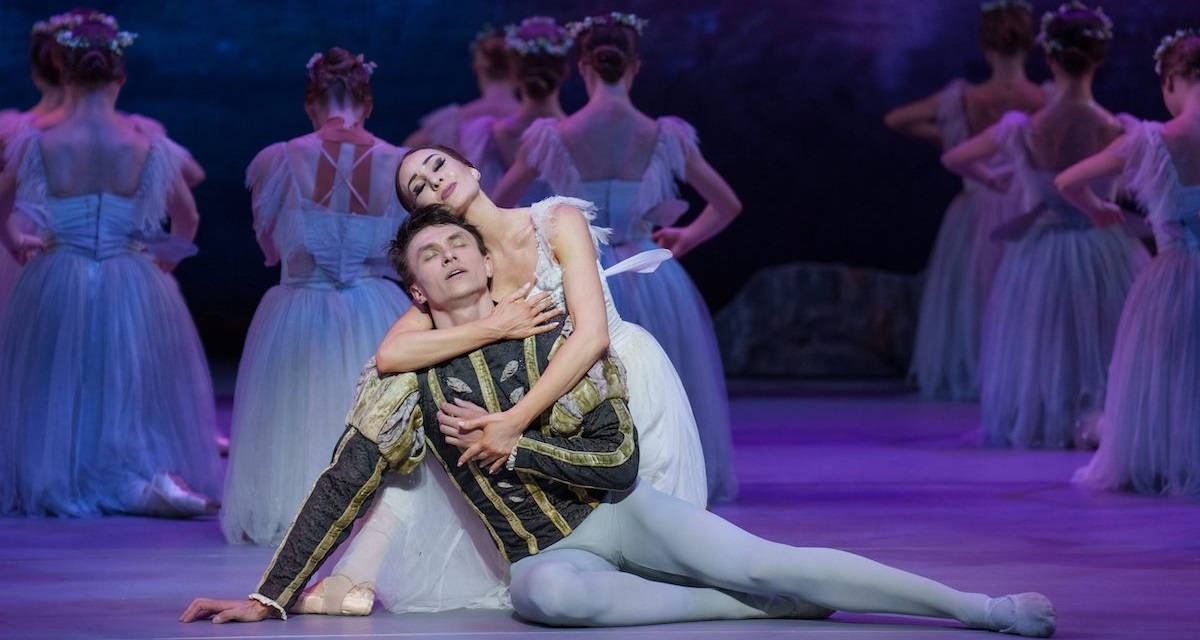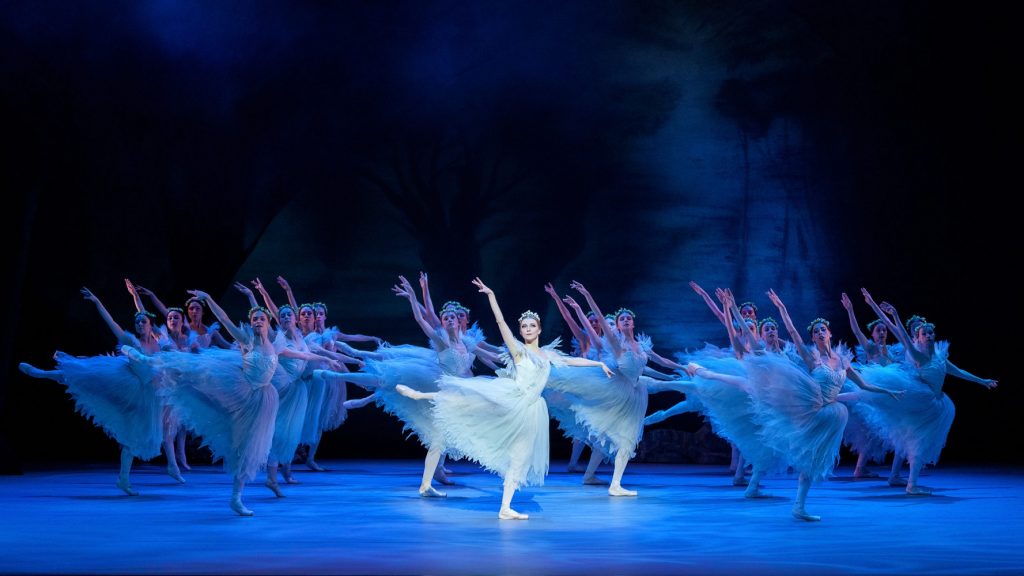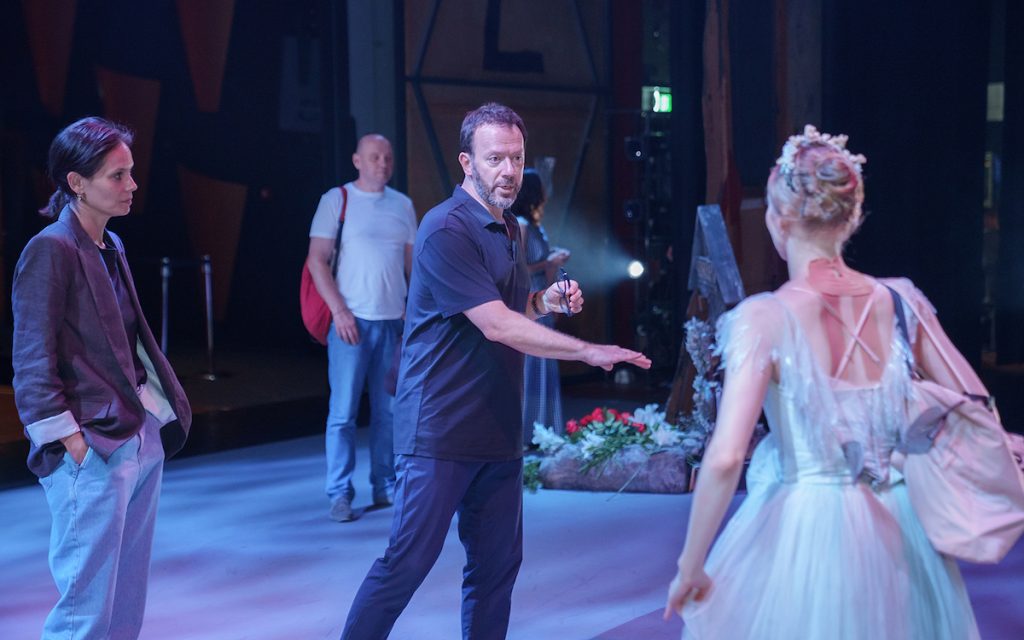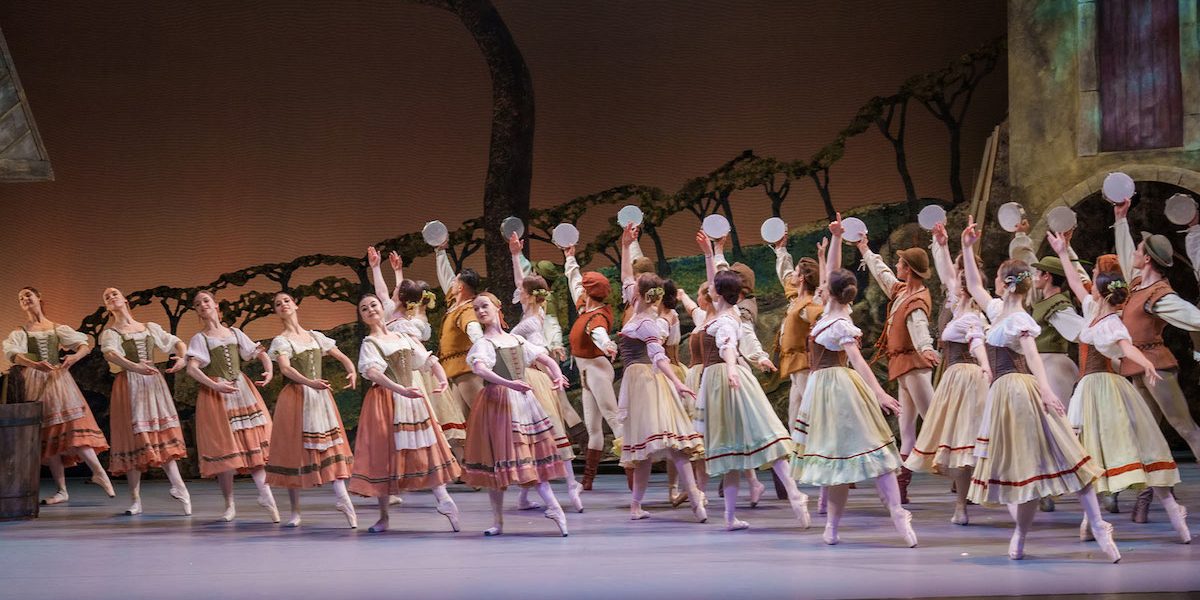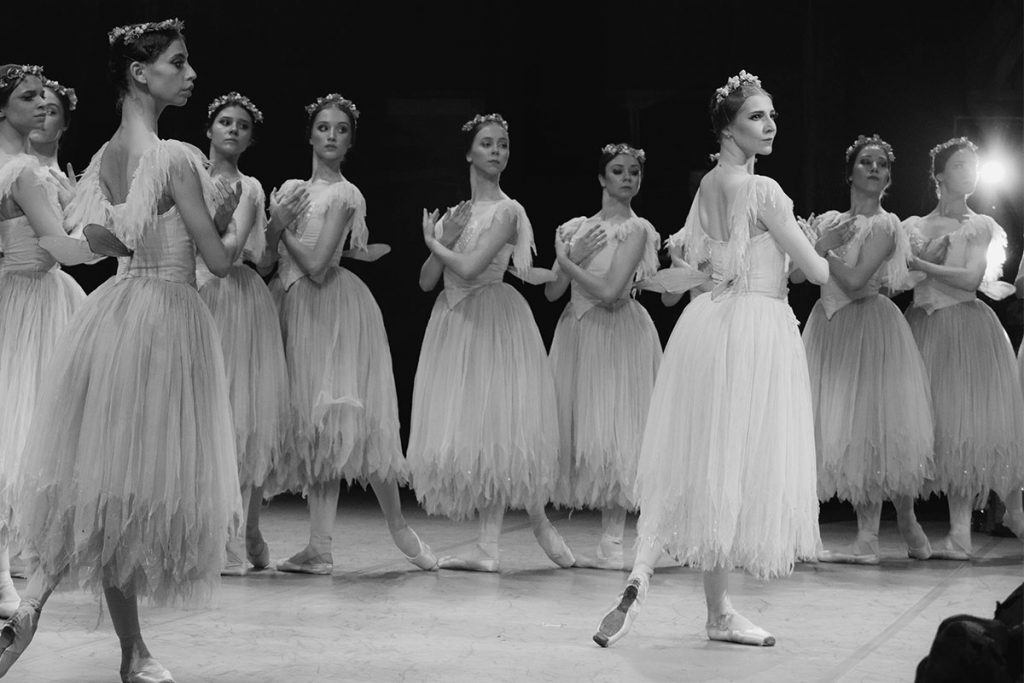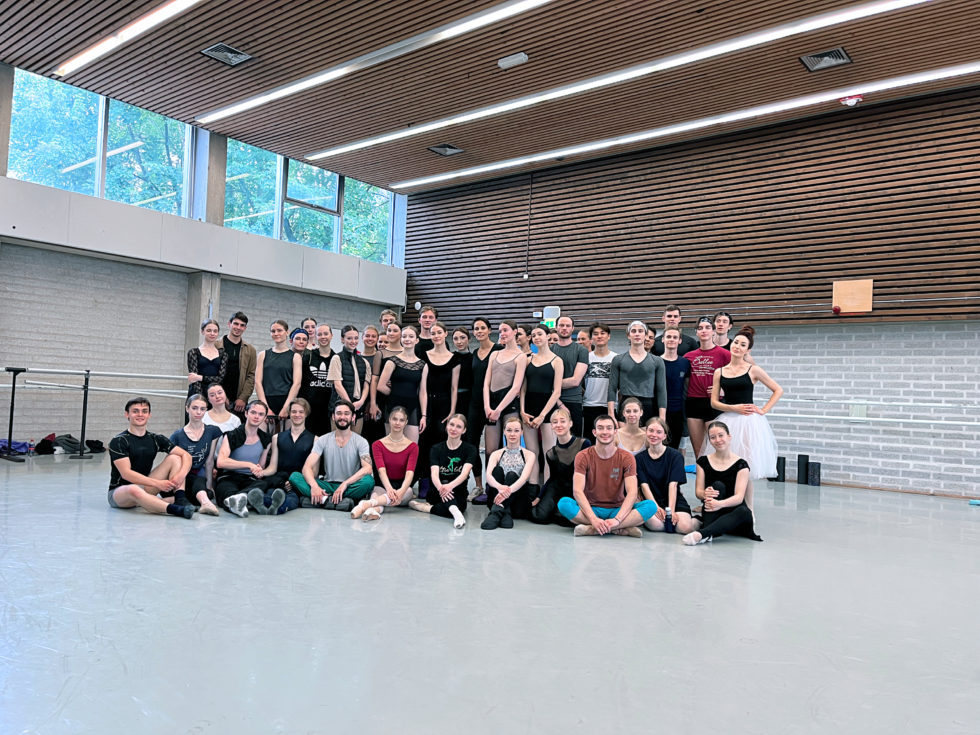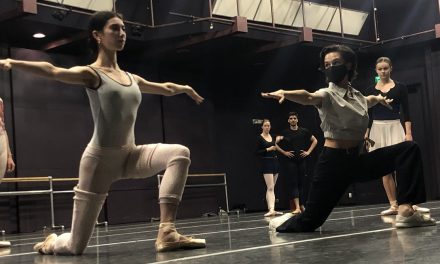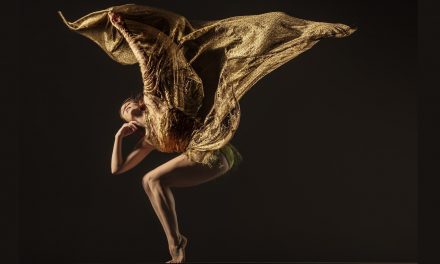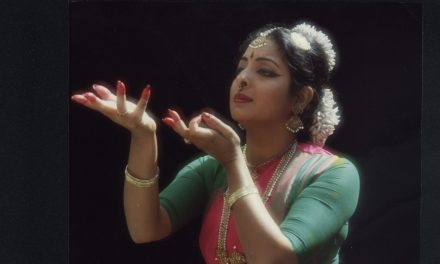Each had a distinct story as the dancers left Ukraine. Some fled the invading army. Some were dancing in Ukrainian cities being bombed. Others were Ukrainians dancing in Russian ballet companies. They all became refugees as Vladimir Putin launched his invasion of Ukraine in February 2022. A cluster arrived in the Netherlands and then there were more who came for refuge and to dance.
The United Ukrainian Ballet’s route to performances this weekend at Segerstrom Center for the Arts reads a bit like one of those classic MGM movies where Mickey Rooney and Judy Garland gather friends to put on a show. Similarly, what began by under a cloud of war as refugee Ukrainian ballet dancers sought safety and to continue their art, evolved into a nascent ballet company with international support that is making the company and Ukraine’s struggle known.
As word spread about the effort to establish a company, the ballet world quickly stepped up with support. Alexei Ratmansky, one of the world’s most in-demand master choreographers provided a major boost when he created a new version of the classic ballet Giselle on the new Ukrainian company. Former Dutch National Ballet principal Igone de Jongh took on artistic director duties while support from the Dutch government and businesses opened the former Netherlands’ Royal Conservatory for class and rehearsal, establishing the Hague the UUB’s home base. Britain’s Birmingham Royal Ballet loaned its sets and costumes for Giselle. The list of in-kind donors continues with transportation companies, ballet shoe providers, massage table manufacturers, and hotel groups.
With that support, the United Ukrainian Ballet began with performances in several Dutch cities in summer 2022. In September 2022, UUB debuted at the London Coliseum premiering Ratmansky’s Giselle. The US premiere followed in February 2023 at Washington DC’s Kennedy Center. As the first US venture beyond the Kennedy Center, Segerstrom can claim bragging rights as the United Ukrainian Ballet makes its west coast debut with live music by the Pacific Symphony.
Throughout the company’s international travels, support from the ballet world has continued as stellar ballerinas originally from or with ties to Ukraine have appeared as guest artists, alternating with the company’s principals in the lead role. The Royal Ballet’s Alina Cojocaru who trained in Ukraine appeared in London. In the Kennedy Center performances, American Ballet Theatre principal dancer Christine Shevchenko who was born in Odessa, Ukraine danced the lead.
Shevchenko returns as Giselle opening night at Segerstrom, partnered by UUB principal dancer Alexis Tutunnique who has been with the UUB almost from the beginning. While trained Ukraine, starting in 2013 he joined Russia’s Mariinsky Theater in St. Petersburg, and then Russia’s Novosibirsk Ballet Theatre until 2019 when he returned to Ukraine’s National Opera as a principal dancer.
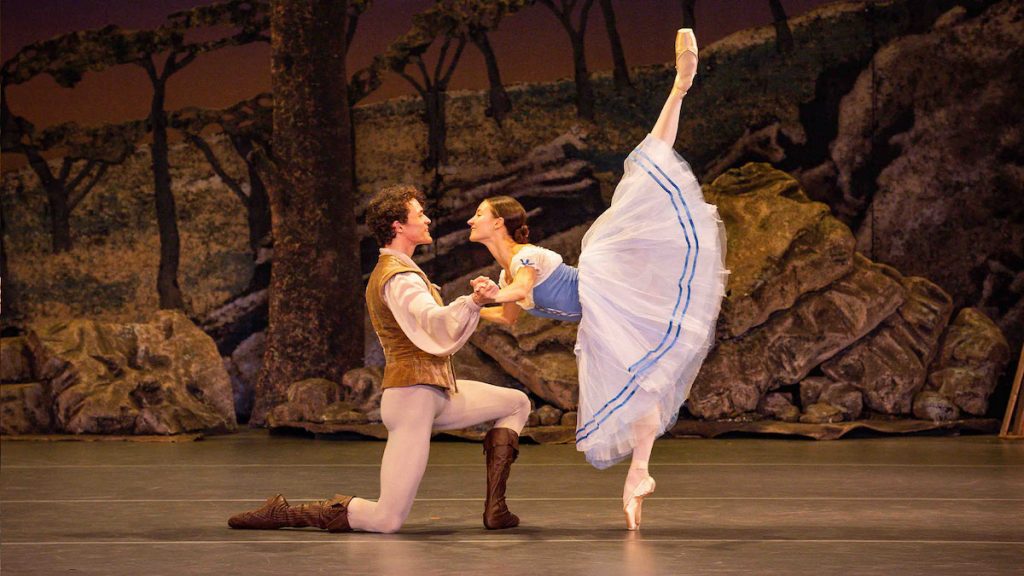
Alexis Tutunnique and Christine Schevchenko in United Ukrainian Ballet’s ‘Giselle’ – Photo by Mark Senior
At the time Russia invaded Ukraine in February 2022, Tutunnique had been in the Netherlands dancing on a project and was involved with the events leading to establishing the United Ukrainian Ballet.
“The Dutch ballet star Igone de Jongh, the CEO of that dance production company Ma`hijs Bongertman, my colleague from the National Opera of Ukraine Stanislav Olshansky, and were working on a project in the Netherlands,” Tutunnique explained, “It was proposed to create a company based in the Netherlands and that would take care of the ballet dancers from Ukraine, provide them with housing, performances and possibility to live and work safely, during the war in our Home Country.”
One of the first supporters was Ratmansky.
In February 2022, Ratmansky denounced the Russian invasion and prohibited Russia’s Bolshoi Ballet to perform his ballets, something that reportedly the Bolshoi has ignored including performances of a 2019 Ratmansky’s Giselle. As the United Ukranian Ballet Company began to take shape and had enough dancers, Ratmansky offered to set a new version of Giselle on the company.
UUB’s Giselle has roots in a 2019 Bolshoi version Ratmansky created for Russia’s Bolshoi Ballet and reflects the complicated interconnections between Ukraine and Russia. Generally, Ratmansky is regarded as a Russian choreographer because of his Russian birth and his time with the Bolshoi including artistic director from 2004 to 2008. However, Ratmansky’s father was Ukrainian and early on, Ratmansky danced in Ukraine. In 2008, he left the Bolshoi and Russia, turning to Europe and America for stints as choreographer in residence at New York City Ballet and American Ballet Theatre.
Prior to the Kennedy Center performances, Ratmansky told the Washington Post’s Sarah Kaufman press “Since the war started, I am absolutely Ukrainian with all my soul, because that is where my heart is.”
Tutunnique underscored the importance of Ratmasky’s involvement.
“His creation Giselle gave the company the opportunity to be presented on a high level with his new version of one of the legends in the classical ballet heritage. Ratmansky’s participation influenced a lot!” Tutunnique acknowledged, “He is one of the top living choreographers in the world and to work with him it was a big privilege to all of the dancers.”
In multiple interviews, Ratmansky was asked why the French ballet Giselle was selected. As Ratmansky told New York Time’s Marina Harss in August 2022: “We picked it because it is something that the dancers know, and that requires a large number of dancers, but also because it is not Russian.”
Beyond his status as a world renowned choreographer, Ratmansky brought his deep experience choreographing for Russian, American and European ballet companies, as well as his reputation for historical research that underlies this revision of Giselle.
“The dancers, and me personally, we very much like to work with Alexey during rehearsals, because he is a walking encyclopedia of the ballet art,” Tutunnique offered, “Working with him inspired us a lot, giving the dancers new knowledge about technical and dramatic sides of the role in his ballet creations.”
Ratmansky’s set his new version of Giselle during two months in the Hague. UUB dancers in rehearsal in this YouTube video filmed before the London premiere: https://www.youtube.com/watch?v=FWwDGdGXcr8
From reviews of the London and Washington performances, the architecture of the 1861 original and subsequent, familiar versions, is retained. The first act still revolves around a young peasant girl in love with Albrecht who is a nobleman posing as a peasant. When a party of aristocrats stops in the village, Albrecht’s deception is revealed as is his betrothal to an elegant lady in the hunting party. Betrayed, the broken hearted Giselle dies. In Act 2, Albrecht goes to Giselle’s grave, encounters the ghostly, vengeful Wilis and is commanded to dance to his death. Unable to persuade her sister Wilis to show mercy, Giselle takes on some of the dancing trying to save Albrecht who is about to die when, just in the nick of time, the morning light banishes the Wilis, including Giselle, and Albrecht loses her a second time.
While the plot is intact, historical research led Ratmansky to instill subtle differences in the characters. Giselle is a young, energetic girl enthralled with this young man. She just loves to dance, not a coronary waiting to happen. At Giselle’s death, this Albrecht does not flee, instead remains, absorbing the unintended, but undeniably lethal consequence of his romantic aspirations. Even Albrecht’s fiancée emerges as more empathetic to Giselle’s plight and less the privileged snob usually portrayed. Reviewers consistently remarked on the Act 2 conclusion where Ratmansky’s Giselle not only expresses forgiveness in her farewell as she returns to the grave, now she bids Albrecht marry the fiancé and live a good life.
Tutunnique recounted some of the changes the audience might look for when he dances Albrehct in the opening night of Ratmansky’s Giselle at Segerstrom.
“For Albrecht, there is completely different male variation in the second act. Also, there are a few new variations which you will not find in the other versions,” he shared. “There are a lot of interesting, very deeply detailed nuances in dance and mise-en-scène, which makes the ballet more ‘juicy,’ and in my opinion, more understandable for the audience, because you can ‘read’ each of the movements, and ‘hear’ every pose and gesture, like in a silent movie.”
In his review of the September 2022 London performance for the Guardian, David Jays described Ratmansky’s Giselle as “little short of a miracle. The United Ukrainian Ballet – a crack company of dancers, some of whom have fled their homeland – ardently refresh a classic.”
The company’s stated purpose “to tell the country’s story and to keep their cultural heritage alive” is getting help from the Henry T. and Elizabeth Segerstrom Foundation along with actor Liev Schreiber’s non-profit organization BlueCheck Ukraine. Schreiber who has family ties to Ukraine founded the organization in March 2022 to support efforts to provide humanitarian aid to victims of the Russian invasion.”
Such support has given Ukrainian ballet dancers a way to continue their art, including men who were excused from military service by the Ukrainian Cultural Arts Ministry. The company quietly acknowledges fellow dancers who chose to fight, including dancer and teacher Oleksandr Shapoval who died on battlefield. Tutunnique admitted there are different stress levels among the dancers, depending on their situation. His father is in Kyiv and his mother is in the Netherlands.
“Everyone has a different stress level and different life situation. We have dancers with parents and family members on the battlefield, some dancers lost their home because it was destroyed or the city is occupied by Russians. But in general, what I see, the more performances dancers have, the better they feel, because when they work, rehearse, perform, they abstract for that time from the reality, and dance becomes a psychotherapy for them.”
Two UUB dancers articulated their experiences to CBS reporters before the Kennedy Center Performances: https://www.cbsnews.com/video/ukrainian-ballet-company-makes-us-debut/
In its short life, United Ukrainian Ballet has cohered from a group of refugees who danced into a ballet company in exile.
United Ukrainian Ballet at Segerstrom Center for the Arts, 660 Town Center Dr., Costa Mesa; Thurs.-Sat., June 29-July 1, 7 pm, Sun., July 2, 1 pm, $29-$119. To purchase tickets, please click HERE.
To learn more about the Segerstrom Center for the Arts season, please visit their website.
This article was edited to add a hyperlink on 6/24/23
Written by Ann Haskins for LA Dance Chronicle.
Featured image: United Ukrainian Ballet in Giselle – Photo courtesy of the artists.

